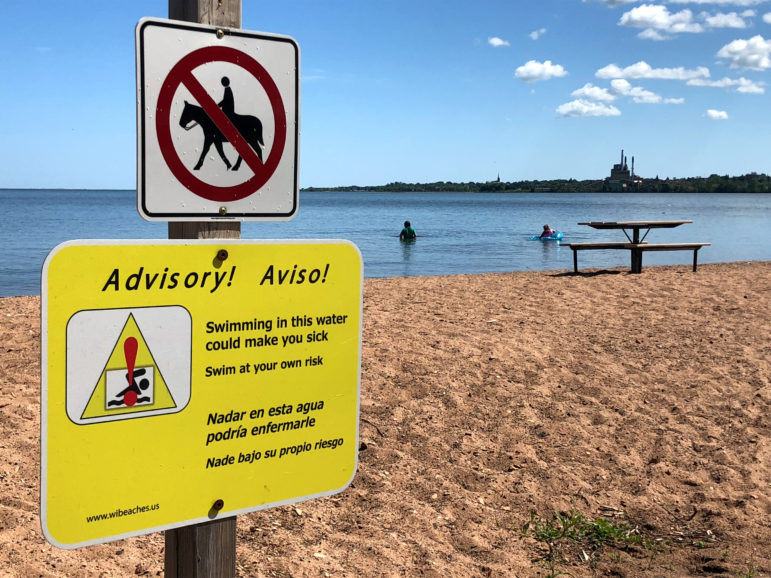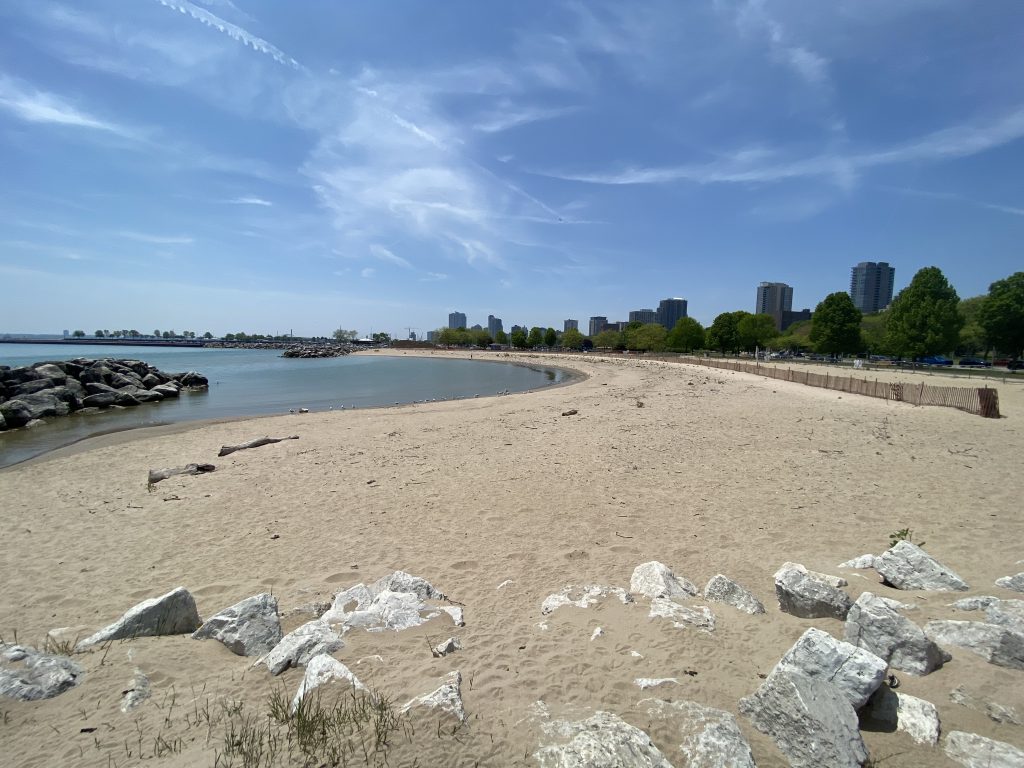Milwaukee’s Beaches Had Polluted Water For More Than Half of 2024
Sampling found 77 percent of Wisconsin's Great Lakes beaches had high levels of E. coli, but danger was often transient.
As Wisconsinites hit the beach this summer, a new report finds 77 percent of Great Lakes beaches in the state tested as potentially unsafe for swimming on at least one day last year.
The analysis is part of a broader review of testing for bacteria at coastal beaches that found 61 percent of beaches nationwide had at least one day where indicators of fecal contamination like E. coli reached potentially unsafe levels.
State officials say Wisconsin beaches are safe and caution the report from the nonprofit Wisconsin Environment Research and Policy Center reflects a snapshot in time.
“We need to do a better job of controlling the sources of pollution that bring that nasty bacteria to the places that we want to be swimming and having fun in the water,” said Rumpler, the group’s clean water director.
Sixteen beaches, or 12 percent of those tested, had potentially unsafe swimming conditions on at least 25 percent of testing days last year. The results show beaches in Manitowoc and Milwaukee counties along Lake Michigan had potentially unsafe conditions on half or more days when testing took place.
The group examined whether levels of E. coli or enterococci exceeded the EPA’s most protective beach action value, a tool states use to decide beach advisories or closings. For E. coli, that threshold is 190 colony-forming units per 100 milliliters or 190 cfu/100 mL. At that level, it’s estimated that 32 cases of illness occur among every 1,000 swimmers.
However, Wisconsin regulators base its E. coli threshold on the EPA’s alternative beach action value of 235 cfu/100 mL or 36 illnesses per 1,000 swimmers.
If levels go beyond that, the Wisconsin Department of Natural Resources notifies people in real time through an interactive map. Local public health officials also issue an advisory that swimming in elevated bacteria levels could make people sick. State regulations require beaches to close when levels reach roughly four times that amount or 1,000 cfu/100 mL.

A sign warns of the risks of swimming at Lake Superior’s Maslowski Beach in Ashland, Wis., on Aug. 10, 2019. Researchers have flagged high levels of E. coli at the beach and others along Wisconsin’s Great Lakes shoreline. The bacteria arrive in human, bird and animal feces, and can sicken people who ingest them. Danielle Kaeding/WPR
Sampling leads to 139 beach closures in Wisconsin last year
Last year, water quality testing found 516 instances where E. coli exceeded recommended levels and resulted in 139 beach closures out of nearly 3,700 samples collected, according to the DNR. Diane Packett, the agency’s coastal beach program manager, said closures reflected about 4 percent of all samples taken. Elevated levels represented about 14 percent.
“Our beaches are safe, especially if you take reasonable precautions, like not swallowing water for young children,” Packett said.
Greg Kleinheinz is director of the Environmental Research and Innovation Center at the University of Wisconsin-Oshkosh. He’s been involved with the state’s beach monitoring program since 2003. He said most E. coli are harmless, but they can indicate contamination.
He said waterfowl and stormwater runoff are the main drivers of closures. Although the report’s findings may seem alarming, Packett said water quality in Wisconsin is generally good. She noted the results are based on one day out of three months.
While elevated levels don’t guarantee people will get sick, Rumpler said health officials estimate around 57 million cases of illness nationwide in water with pathogens that can cause diarrhea, vomiting or skin rashes.
The group recommends states and the federal government invest resources to upgrade infrastructure. Rumpler applauded Wisconsin’s inclusion of around $732 million in additional borrowing to help communities upgrade systems.
He added that federal programs like the EPA’s Clean Water State Revolving Loan Fund are vital for providing funds to states for those upgrades. President Donald Trump has proposed slashing funds for state revolving loan programs, which could cost Wisconsin $55 million annually.
At the same time, Packett noted there are less costly ways communities can protect their beaches through projects such as rain gardens that filter runoff or native plantings to deter large groups of geese and gulls. She said people should avoid feeding wildlife and pick up any trash they leave behind.
Report: Most Wisconsin coastal beaches were potentially unsafe for swimming for at least 1 day was originally published by Wisconsin Public Radio.
If you think stories like this are important, become a member of Urban Milwaukee and help support real, independent journalism. Plus you get some cool added benefits.

















